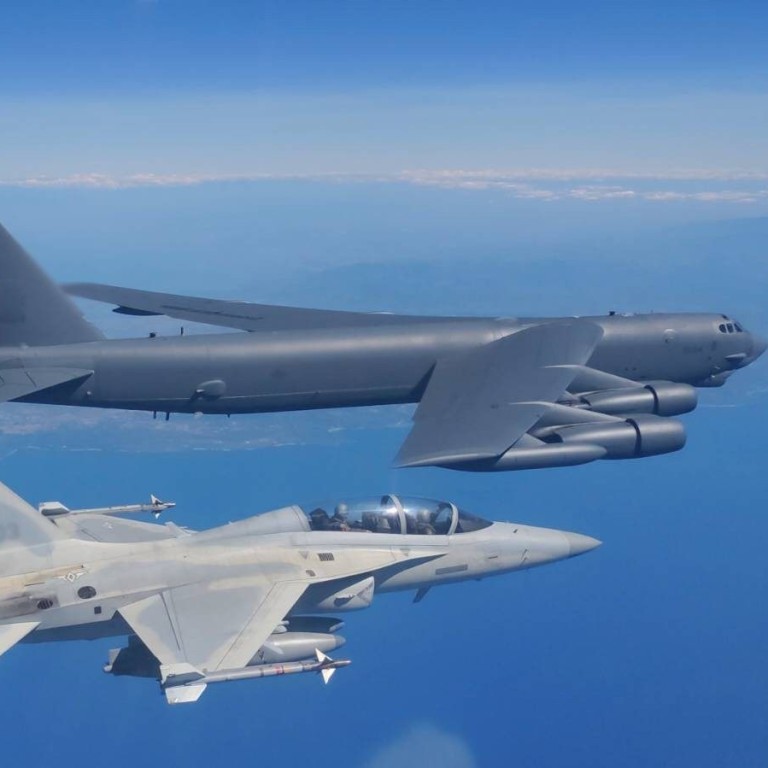
South China Sea: PLA sends forces to monitor US-Philippines air patrols over disputed waters
- Beijing accuses Manila of ‘roping in non-regional countries’ to stir trouble in the region as allies hold second drill this month
- Tensions over the waterway are heated as the Philippines mulls permanent facility on contested reef and accuses Chinese fishermen of harming ecosystem
In response, China accused the Philippines of “roping in non-regional countries to stir trouble in the South China Sea” and “publicly hyping up a so-called joint air patrol”, though it did not directly refer to the United States.
The Southern Theatre Command, the PLA division that oversees the South China Sea, said on Monday night it had sent its naval and air forces to closely watch the situation. The command said it had kept the situation “under control” and that it would “maintain a high level of vigilance” to defend national sovereignty and preserve regional stability.
The Philippine Air Force sent three FA-50 combat aircraft while the US Pacific Air Forces sent a B-52H bomber to patrol the area, the Philippine Air Force said on Facebook.
PLA patrols South China Sea amid strained ties with the Philippines
China claims most of the South China Sea based on its “nine-dash line” – a line that Beijing says appears on historical maps and that has been used to justify its maritime claims. But Beijing’s claims to the resource-rich and strategically important waterway have been disputed by countries in the region, including the Philippines and Vietnam.
Clashes between the coastguards of the two countries near Second Thomas Shoal, or Renai Jiao in Chinese, have also prompted Manila to mull plans to install permanent facilities on the reef, which Beijing warned would be met with “resolute responses”.
This week, the Philippines accused Chinese fishermen of using cyanide to catch fish and “intentionally destroy” the disputed Scarborough Shoal, known as Huangyan Island in China.
Cyanide fishing has been banned in many countries, including the Philippines, as the toxic chemical can devastate the marine ecosystem.
Chinese foreign ministry spokeswoman Mao Ning said on Monday the accusation was “fabricated” as the Chinese government “highly values ecological protection and fishery resources and conservation”.
Bilateral relations have pivoted since Philippine President Ferdinand Marcos Jnr took office in 2022 and did away with predecessor Rodrigo Duterte’s non-confrontational approach in the South China Sea.
Marcos has forged closer ties with the US and other allies. In November, he resumed joint patrols with the US in the South China Sea – a practice halted by Duterte in 2016.
He has also sought closer security cooperation with Japan as Tokyo’s ties with Beijing frayed over the East China Sea.
Chinese Foreign Minister Wang Yi said recent developments had brought Beijing and Manila to “a crossroads”.
In a phone call with his Filipino counterpart Enrique Manalo in December, Wang urged Manila to “act with caution” and “return to the right path” to manage the two countries’ maritime disputes.
He also warned the Philippines against “colluding with ill-intentioned external forces to continue to stir up troubles”.


